Heroic Sculpture: Zair Azgur's Creativity During the Great Patriotic War
During the years of the Great Patriotic War, propaganda art came to the forefront – graphic design including posters and satirical drawings. Sculpture in 1941-1942 was predominantly studio-based. Starting from 1943, projects for monuments in temporary materials (clay, plaster) were developed. The leading genre remained portraiture. Thematic compositions were considered preparatory and sketch material.
It was during this time that sculpture witnessed a new birth, interpreting the “heroic portrait”. By “heroic”, it meant portraits of combatants; realistic depictions with elements of exaggeration – intentional deformation of form aimed at maximizing the impact of these representations.
The realism of Zair Azgur’s wartime art is characterized as assertive, dictating, and excluding any possibility of working otherwise.
In the early months of the war, the sculptor actively participated in the production of anti-fascist leaflets.
From August 9, 1941, he worked in Gomel at the editorial office of the Central Committee of the Communist Party (Bolsheviks) of Belarus as the head of the artistic department of agitprop posters.
On October 6, 1941, under the Central Committee of the Communist Party (Bolsheviks) of Belarus, Azgur was dispatched to Novosibirsk and Tomsk, where he initiated the establishment and served as the artistic editor of the illustrated newspaper “Za Rodinu” of the Tomsk Regional Committee of the Communist Party (Bolsheviks) and the City Council of Workers’ Deputies. He participated in organizing and served as a member of the Union of Soviet Artists of Tomsk as the deputy chairman.
In March 1942, upon the call of the Central Committee of the Communist Party (Bolsheviks) of Belarus, Azgur was sent to Moscow by the Novosibirsk Regional Committee of the Communist Party (Bolsheviks), where he remained until 1944 under the jurisdiction of the Arts Department of the Council of People’s Commissars of the Byelorussian SSR. He worked in the propaganda and agitation department as a sculptor and became a member of the Moscow Union of Soviet Artists.
It was during this time that the sculptor began a new cycle of works. Over three years, he created about forty portraits of war heroes: N. Gastello (1942), V. Talalikhin (1942), A. Krivoshein (1942), A. Molodchy (1943), P. Pototskaya (1943), M. Silnitsky (1943), A. Rodimtsev (1943), F. Smolyachkov (1943), L. Dovator (1943), and others. Most of them were done from life, in a limited number of sessions. This factor, among others, dictated their expressive and plastic solutions: liveliness, immediacy, and sketch-like quality. This approach, based on conveying the individuality of the subjects (their appearance, character, emotional state), devoid of pathos, is characteristic of the portraits dated 1942: Talalikhin, Krivoshein, and others; partly for portraits executed in 1943: Smolyachkov, Pototskaya, and others. These works do not convey the sense of combat dynamics, drama, or poster-like quality.
Gradually, portraits of the heroic cycle became more dramatic. The form became more complex, with heightened spatial twists and a more tense silhouette. The sculptor moved towards formal enlargement (the works exceeded life size several times), monumentalizing the images.
The main qualities of Azgur’s works during the war years are the strength and confidence of the sculptural forms, the conciseness of language, and bold artistic generalizations.
In search of images and motifs resonant with the wartime, capable of serving as inspiring examples, Azgur turned to the pages of Belarus’s heroic past, drawing historical parallels. In 1943, the artist created a portrait of one of the leaders of the Belarusian peasant liberation movement of the 17th century, Filon Garkushi, as well as portraits of princes Vladimir of Polotsk and Vasily Minsk depicted as warriors in full combat gear (helmet, chain mail, shield).
The first creative results of the heroic years were summarized at the All-Union Art Exhibition “Great Patriotic War,” organized by the Arts Committee under the Council of People’s Commissars of the USSR for the 25th anniversary of the October Socialist Revolution in 1942 in Moscow. The exhibition featured paintings (V. Baksheev, V. Byalynitsky-Birulya, P. Konchalovsky, P. Korin, among others), graphics (G. Vereisky, D. Shmarinov, N. Dormidontov, among others), and sculptures (A. Grube, S. Orlov, N. Tomsky, among others). For the portraits of Heroes of the Soviet Union V. Talalikhin, A. Yeryomenko, and N. Gastello presented by Azgur, he was awarded the first-degree diploma by the Arts Committee under the Council of People’s Commissars of the USSR on February 19, 1943.
For the series of portraits created during the Great Patriotic War, Zair Azgur was awarded the highest title of the country – People’s Artist of the Byelorussian SSR in 1944.

